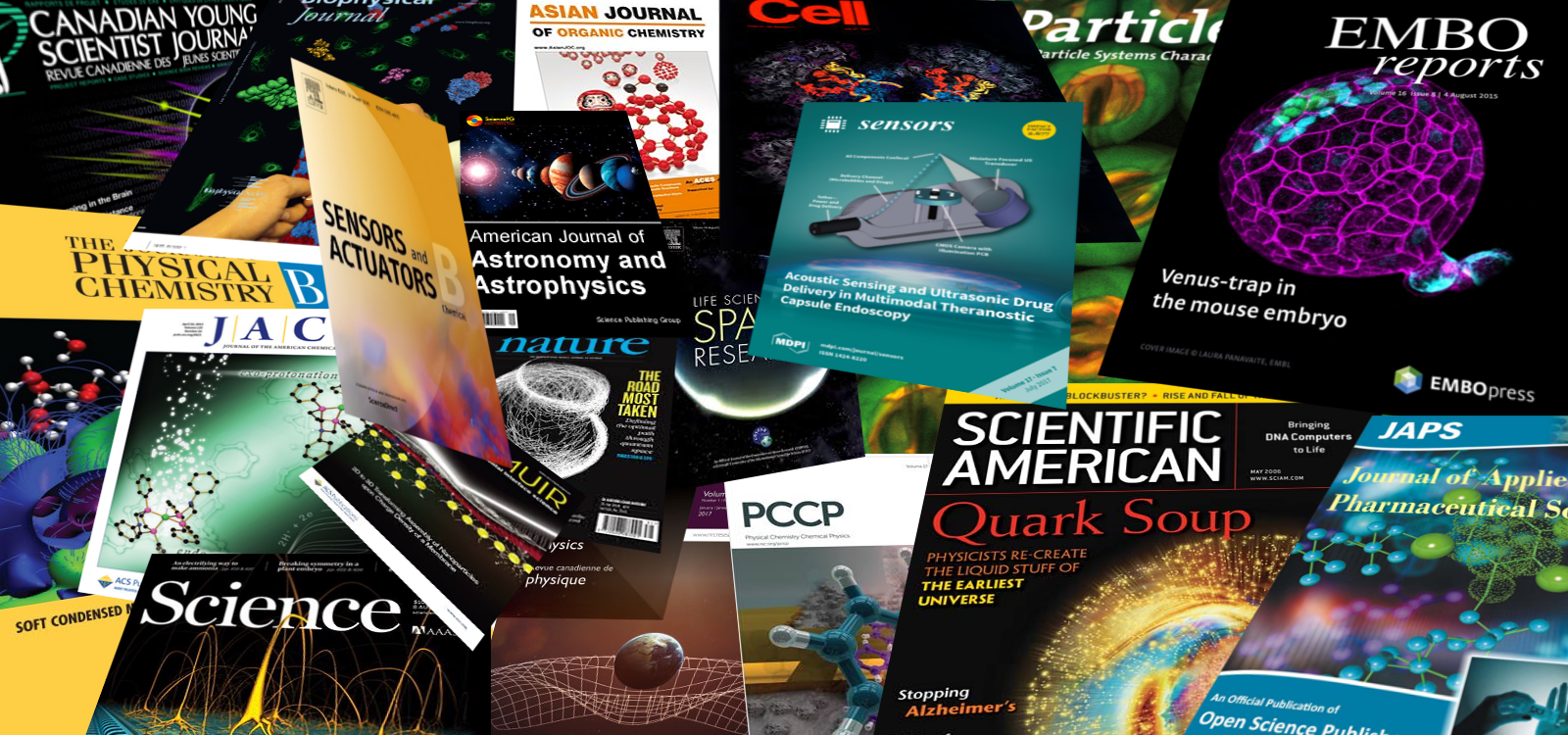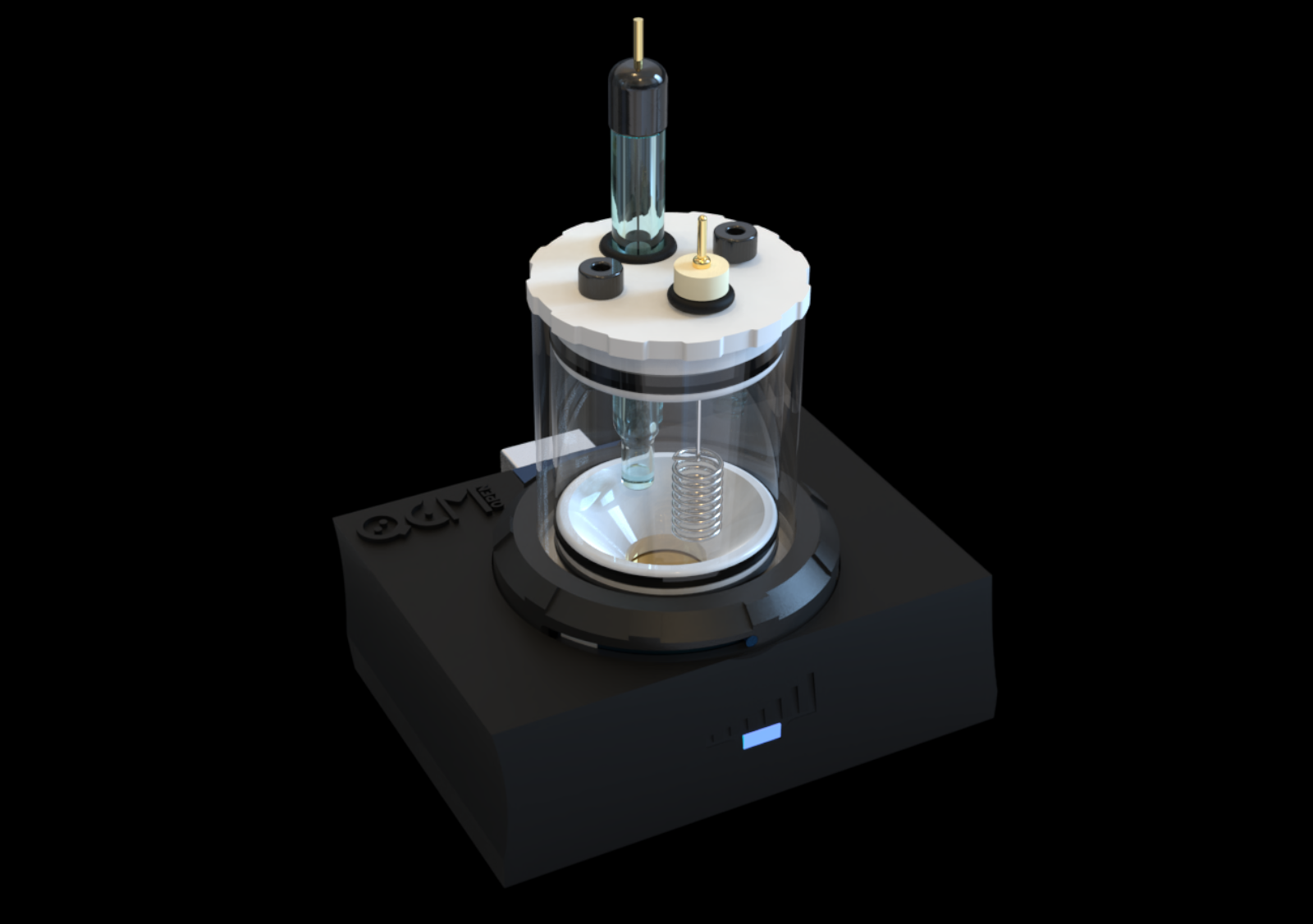openQCM – Powered by Novaetech S.r.l

Scientific Papers
Publications citing the applications of openQCM (by Novaetech S.r.l.) instruments and accessories in scientific research.
The list of scientific papers published on the most important journals showing the usage of openQCM in several scientific fields, such as thin film deposition, chemical sensors, biological research and biosensors.
Because of the large number of publications, we are reorganizing everything by subject areas. This will take some time. Thank you for your patience
2025
Lazarova, Katerina; Bozhilova, Silvia; Docheva, Martina; Pavlova, Ketrin; Alexieva, Gergana; Christova, Darinka; Babeva, Tsvetanka
Hygrosensitive Response and Characteristics of Copolymer Coatings with Potential for Humidity Monitoring Journal Article
In: Coatings, vol. 15, no. 8, 2025, ISSN: 2079-6412.
Abstract | Links | BibTeX | Tags: Copolymers, humidity, openQCM NEXT, optical sensing, QCM, Quartz Crystal Microbalance, Thin films
@article{coatings15080954,
title = {Hygrosensitive Response and Characteristics of Copolymer Coatings with Potential for Humidity Monitoring},
author = {Katerina Lazarova and Silvia Bozhilova and Martina Docheva and Ketrin Pavlova and Gergana Alexieva and Darinka Christova and Tsvetanka Babeva},
url = {https://www.mdpi.com/2079-6412/15/8/954},
doi = {10.3390/coatings15080954},
issn = {2079-6412},
year = {2025},
date = {2025-08-14},
urldate = {2025-01-01},
journal = {Coatings},
volume = {15},
number = {8},
abstract = {Newly developed hygrosensitive poly(vinyl alcohol) derivatives comprising grafted poly(N,N-dimethylacrylamide) chains of varied length and graft density are presented. The optical, sensing, and hydration properties of these copolymer thin films prepared by spin-coating were systematically studied. Refractive indices (n), absorption coefficients (k), and thicknesses (d) were calculated via curve fitting of the reflection spectra. Reflectance measurements across a relative humidity range of 5% to 95% were used to evaluate the humidity sensing behavior. Coating swelling exceeding 100% was observed. Hydration levels under high humidity conditions were studied using a quartz crystal microbalance method. This revealed approximately 24% water content in the polymer with the higher grafting density and shorter PDMA chains compared to around 31% in the copolymer with longer PDMA brushes that were loosely grafted The potential application of these copolymers as responsive materials for advanced humidity sensing is discussed. A combined optical and gravimetric approach for characterizing the humidity sensing properties of thin nanosized coatings is demonstrated, providing opportunities for advanced characterization of new functional materials, thus broadly contributing to the state of the art of sensor technologies.},
keywords = {Copolymers, humidity, openQCM NEXT, optical sensing, QCM, Quartz Crystal Microbalance, Thin films},
pubstate = {published},
tppubtype = {article}
}
Newly developed hygrosensitive poly(vinyl alcohol) derivatives comprising grafted poly(N,N-dimethylacrylamide) chains of varied length and graft density are presented. The optical, sensing, and hydration properties of these copolymer thin films prepared by spin-coating were systematically studied. Refractive indices (n), absorption coefficients (k), and thicknesses (d) were calculated via curve fitting of the reflection spectra. Reflectance measurements across a relative humidity range of 5% to 95% were used to evaluate the humidity sensing behavior. Coating swelling exceeding 100% was observed. Hydration levels under high humidity conditions were studied using a quartz crystal microbalance method. This revealed approximately 24% water content in the polymer with the higher grafting density and shorter PDMA chains compared to around 31% in the copolymer with longer PDMA brushes that were loosely grafted The potential application of these copolymers as responsive materials for advanced humidity sensing is discussed. A combined optical and gravimetric approach for characterizing the humidity sensing properties of thin nanosized coatings is demonstrated, providing opportunities for advanced characterization of new functional materials, thus broadly contributing to the state of the art of sensor technologies.
2024
Astier, Samuel; Johnson, Edwin C; Norvilaite, Oleta; Varlas, Spyridon; Brotherton, Emma E; Sanderson, George; Leggett, Graham J; Armes, Steven P
Controlling Adsorption of Diblock Copolymer Nanoparticles onto an Aldehyde-Functionalized Hydrophilic Polymer Brush via pH Modulation Journal Article
In: Langmuir, 2024.
Abstract | Links | BibTeX | Tags: Adsorption, Copolymers, nanoparticles, openQCM NEXT, QCM-D, Silicon, Solution chemistry
@article{astier2024controlling,
title = {Controlling Adsorption of Diblock Copolymer Nanoparticles onto an Aldehyde-Functionalized Hydrophilic Polymer Brush via pH Modulation},
author = {Samuel Astier and Edwin C Johnson and Oleta Norvilaite and Spyridon Varlas and Emma E Brotherton and George Sanderson and Graham J Leggett and Steven P Armes},
url = {https://pubs.acs.org/doi/full/10.1021/acs.langmuir.3c03392},
doi = {https://doi.org/10.1021/acs.langmuir.3c03392},
year = {2024},
date = {2024-02-06},
urldate = {2024-02-06},
journal = {Langmuir},
publisher = {ACS Publications},
abstract = {Sterically stabilized diblock copolymer nanoparticles with a well-defined spherical morphology and tunable diameter were prepared by RAFT aqueous emulsion polymerization of benzyl methacrylate at 70 °C. The steric stabilizer precursor used for these syntheses contained pendent cis-diol groups, which means that such nanoparticles can react with a suitable aldehyde-functional surface via acetal bond formation. This principle is examined herein by growing an aldehyde-functionalized polymer brush from a planar silicon wafer and studying the extent of nanoparticle adsorption onto this model substrate from aqueous solution at 25 °C using a quartz crystal microbalance (QCM). The adsorbed amount, Γ, depends on both the nanoparticle diameter and the solution pH, with minimal adsorption observed at pH 7 or 10 and substantial adsorption achieved at pH 4. Variable-temperature QCM studies provide strong evidence for chemical adsorption, while scanning electron microscopy images recorded for the nanoparticle-coated brush surface after drying indicate mean surface coverages of up to 62%. This fundamental study extends our understanding of the chemical adsorption of nanoparticles on soft substrates.},
keywords = {Adsorption, Copolymers, nanoparticles, openQCM NEXT, QCM-D, Silicon, Solution chemistry},
pubstate = {published},
tppubtype = {article}
}
Sterically stabilized diblock copolymer nanoparticles with a well-defined spherical morphology and tunable diameter were prepared by RAFT aqueous emulsion polymerization of benzyl methacrylate at 70 °C. The steric stabilizer precursor used for these syntheses contained pendent cis-diol groups, which means that such nanoparticles can react with a suitable aldehyde-functional surface via acetal bond formation. This principle is examined herein by growing an aldehyde-functionalized polymer brush from a planar silicon wafer and studying the extent of nanoparticle adsorption onto this model substrate from aqueous solution at 25 °C using a quartz crystal microbalance (QCM). The adsorbed amount, Γ, depends on both the nanoparticle diameter and the solution pH, with minimal adsorption observed at pH 7 or 10 and substantial adsorption achieved at pH 4. Variable-temperature QCM studies provide strong evidence for chemical adsorption, while scanning electron microscopy images recorded for the nanoparticle-coated brush surface after drying indicate mean surface coverages of up to 62%. This fundamental study extends our understanding of the chemical adsorption of nanoparticles on soft substrates.

